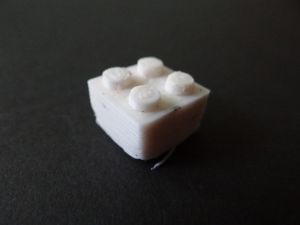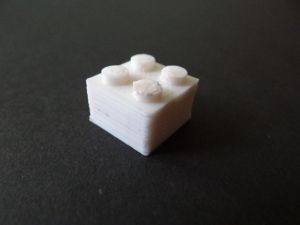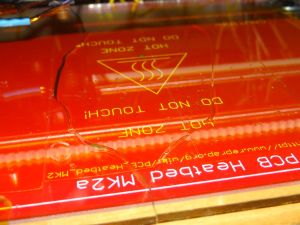Things happened recently
It's good news - bad news time
 Early this week the micro SD card for the SD Ramps finally arrived. We started using it immediately and works flawlessly since then. The only drawback we saw is the speed the GCode file is uploaded to the printer. A GCode file is typically several megabytes and the theoretical maximum upload speed is 14.4 kbytes/second using the printer, but the actual speed is much less then that.
Early this week the micro SD card for the SD Ramps finally arrived. We started using it immediately and works flawlessly since then. The only drawback we saw is the speed the GCode file is uploaded to the printer. A GCode file is typically several megabytes and the theoretical maximum upload speed is 14.4 kbytes/second using the printer, but the actual speed is much less then that.
Fortunately we found an old USB card reader at the bottom of a drawer. So, if we remove the card from the SD Ramps and using the card reader to put the GCode file directly onto the card it takes only a few second to upload a file which would be several hours otherwise!
Another important thing arrived later this week: a new power supply for the printer. Some of you could remember we used a PC power supply when we installed the heated bed to the printer. It turned out the PC power supply was not an ideal choice: because of the long cables the efficiency was very low and the cables were hot during the printing. And although the ABS filamentThis is the plastic which is used as a source for the printRead more had arrived earlier we were not brave enough to print with ABS this way, because the ABS needs warmer heated bed and hotend. We installed the new power supply immediately and the results were promising with the first tries using PLA. So we decided it is time for a few ABS printing.
 We tried to print a Lego brick, because that was one of the first prints we tried when we started printing. The first try was not perfect, maybe because we used the same settings as we used for the PLA printing except the hotendThis is where the plastic actually melted. It is part of the extruder which contains the pusher and the barrel as well. temperature, which we set to 230 Celsius, the recommended temperature for ABS printing.
We tried to print a Lego brick, because that was one of the first prints we tried when we started printing. The first try was not perfect, maybe because we used the same settings as we used for the PLA printing except the hotendThis is where the plastic actually melted. It is part of the extruder which contains the pusher and the barrel as well. temperature, which we set to 230 Celsius, the recommended temperature for ABS printing.
We changed a few small things in the settings and one significant one: decreased the hotendThis is where the plastic actually melted. It is part of the extruder which contains the pusher and the barrel as well. temperature to 220 Celsius, because we suspected based on the result that we used too high temperature. And the result was much better this way! We didn't expect it will be compatible with a genuine Lego brick, because we didn't know the rate of the shrinking yet. And just as we expected, the result shrank about 1.5% - which is approximately half of the shrinking rate of the PLA.
One thing was certain after the first two test: printing with ABS is much more smelly than printing with PLA. And because we don't know if those chemicals are dangerous or not, and we don't have a chance to use some kind of a ventilation, we put our old air purifier beside the printer in the hope it will filter out some of the dangerous things.
 After two small test print and the preparation with the air filter we were ready for a bigger test print with ABS. We uploaded the GCode file onto the card and started to heat up the heated bed, which takes about 15 minutes to reach the desired 110 Celsius, when the disaster struck. The glass we used for the top of the plate has been broken by the heat! Truth be told we knew there are heat resistant glasses for exactly this purpose, but we hoped a regular glass will do. It didn't...
After two small test print and the preparation with the air filter we were ready for a bigger test print with ABS. We uploaded the GCode file onto the card and started to heat up the heated bed, which takes about 15 minutes to reach the desired 110 Celsius, when the disaster struck. The glass we used for the top of the plate has been broken by the heat! Truth be told we knew there are heat resistant glasses for exactly this purpose, but we hoped a regular glass will do. It didn't...
Now, we are unable to print till we get a new glass for the printer. This shouldn't be a problem, but that one won't be a heat resistant one, too. We try to avoid the same accident by using some heatsink glue to prevent uneven heating of the glass. We hope that will be enough.
Useful links
- Thingiverse
Collection of printable things - YouMagine
Share your imagination - Reprap
The first general-purpose self-replicating manufacturing machine - Is it printable?
How to tell if a 3D model is printable - Find us on Facebook
Our Facebook page - Find us on Google+
Our Google+ page